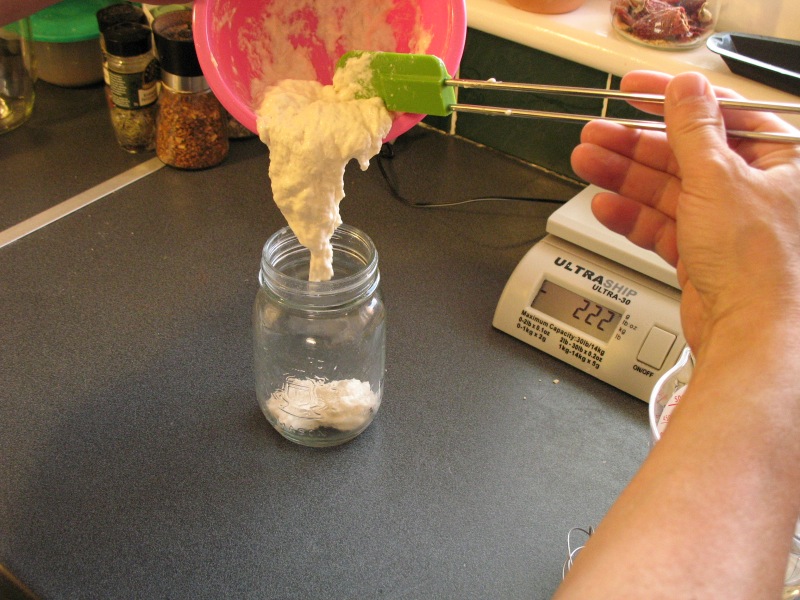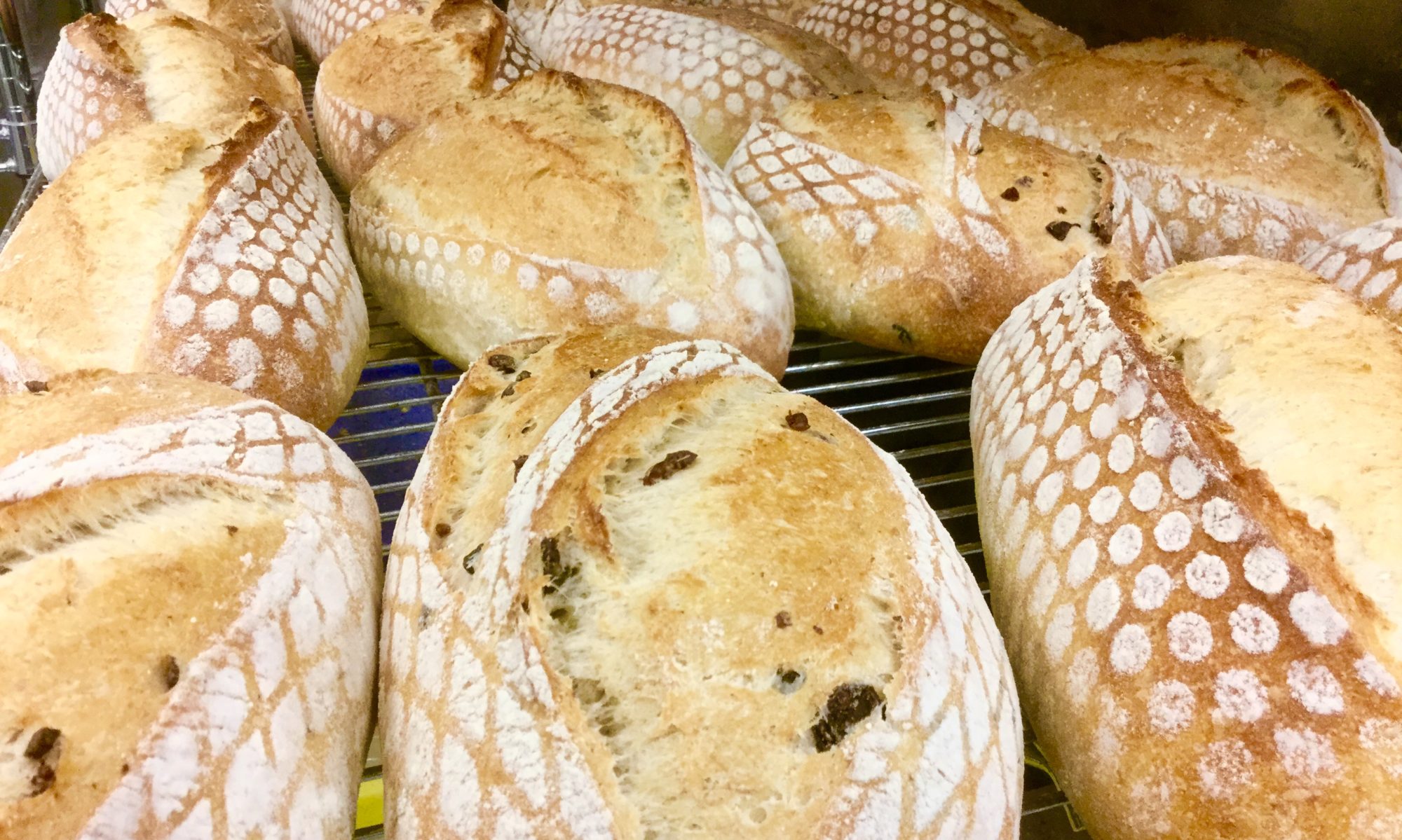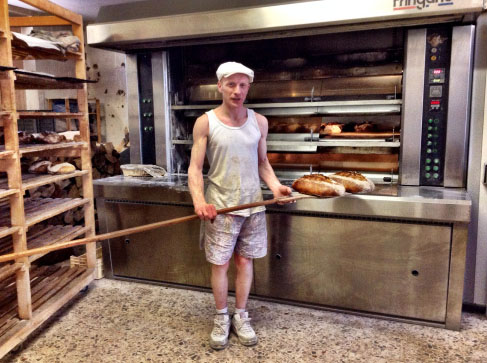
There are several ways to keep a starter, relating to it’s thickness:
- a “wet” starter which is like a thin cake batter
- a thick pancake batter type, as seen in the photo above
- a stiff starter that looks like a ball of bread dough
There are advantages to each but for our purposes in this post, we’ll use the more common ‘thick pancake batter’ type. We’ll also be keeping it at what’s referred to in the bread world as “100% hydration”. This simply means your starter has 100% of the flour’s weight in water weight. If you use 163g of flour, you add 163g of water; if you use 47g flour, use 47g water. Your flour’s weight is always the base and your water is the percentage of that weight.
You’ll possibly see other percentages of starters, like 65% hydration starters which are more dough-like since the water weighs 65% of the flour’s weight, therefore less water than flour. This hydration level is in the area that a regular bread dough so you could actually knead it, it is that thick.
You may also see higher hydration levels, like 125% or even more, making the batter thinner. I just wanted to touch on hydration percentages because it seems to pop up a lot in the bread world.
One great thing about 100% hydration starter is no matter how much you use, you’ll always know that it is half water and half flour so it’s easy to adjust any recipe.
Continue reading “Starter Maintenance: Regular feeds”



